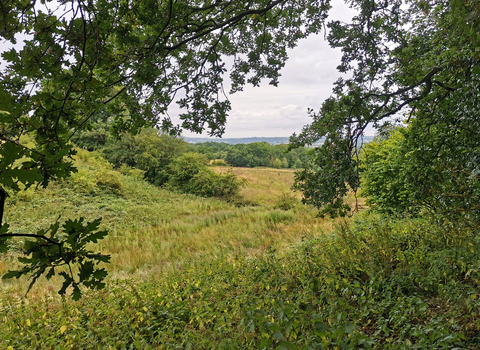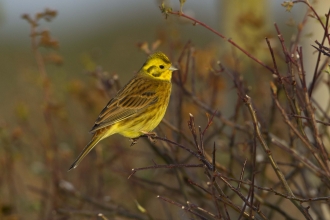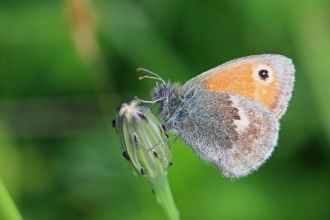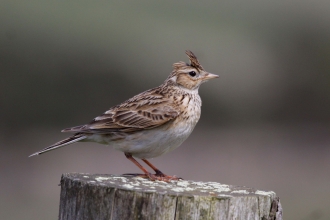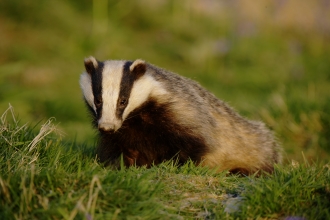With thanks to your support and two generous donations from The Banister Charitable Trust and the Idris and Margaret Jones Charitable Trust, we have been able to secure the purchase of these beautiful meadows near Bromsgrove in north Worcestershire.
In less than a century, the UK has lost more than 97% of its species-rich grassland. Today, only 2% of the meadows that once existed in the UK in the 1930s now remain. Despite high national losses of these vital habitats, Worcestershire retains almost 20% of England’s flower-rich meadows and pastures.
The 14 hectares of Romsley Manor Farm Meadows are part of a network delicate, fragmented habitats that, with your support and the generosity of the two charitable trusts, we have been able to protect for the future. We are now beginning a journey to restore these rare and vulnerable meadows, conserving a crucial habitat for a wide range of flora and fauna, creating corridors to allow wildlife to move freely and safely across the landscape.
Romsley Manor Farm Meadows
The 14 hectares (35 acres) of Romsley Manor Farm Meadows falls within the Arden Natural Character Area as defined by Natural England. The site consists of nine meadows, six of which are designated as a Site of Special Scientific Interest (SSSI), and contains neutral grassland and acidic heath grassland - both rare habitats in Worcestershire and nationally. Since being designated as a SSSI in 1993, they have been in decline due to overgrazing. Ownership of the site will allow us to maintain, monitor and restore the diversity and quality of the meadows, as well as improve connectivity across the landscape.
The site is close to several Local Wildlife Sites (LWS), including our own Penorchard Meadows. To the west of the meadows is Romsley Hills SSSI, cited for its diverse mosaic of neutral grassland, acidic grasslands and rush pasture, similar habitats to Romsley Manor Farm. The meadows at Romsley Manor Farm sit between Romsley Hills SSSI and Ell Wood LWS. providing the opportunity to create networks to connect these two important places for wildlife.
Worcestershire is an incredibly important county for species-rich lowland meadows. These precious and important habitats were once ubiquitous and vital for wildlife; they’re now rare and vulnerable. Not only does the Trust own and manage more than 30 meadows, we also work with landowners across the county to help ensure the survival of these precious places that are still under considerable threat from agricultural improvement by use of chemical fertilisers and over-intensive grazing. The acquisition of the land at Romsley Manor Farm provides an amazing opportunity to restore, protect and maintain these valuable meadows, whilst also creating wildlife corridors across the landscape.
Since 1968 we have worked tirelessly to protect important sites for wildlife and we now own or manage over 3,000 acres of land and provide advice to land managers across a further 100,000 acres. Romsley Manor Farm Meadows will help our efforts to secure 30% of land for nature by 2030 - you can find out more about the land, the wildlife and our plans below.
Romsley Manor Farm Meadows
The land at Romsley Manor Farm consists of nine separate fields that vary in ecological value. Six of the fields are designated as SSSI. The special interest of the site lies in the diversity of the semi-natural grassland sward. One field shows evidence of a ridge and furrow system and the field boundaries are formed by over-mature hedgerows and a wooded green lane. Since the meadows were designated as SSSI in 1993, they have been considered in decline due to overgrazing of several fields, something that we plan to address through our site management plan if we are successful with our fundraising efforts. The importance of species-rich grassland is recognised by the UK Biodiversity Action Plan.
Our primary objective is to maintain, monitor and restore the diversity and quality of the meadows to achieve a ‘favourable’ condition. There is no public access to the site, which will allow the meadows to flourish and rejuvenate, creating a peaceful haven for wildlife. We will restore the infrastructure to enable grazing and hay cutting, maintain the mature hedgerows and standard trees for the benefit of breeding birds and enhance connectivity with adjacent sites
Romsley Manor Farm’s plants
The field parcels at Romsley Manor Farm consist of a combination of neutral grassland, acidic heath grassland and rush pasture. 15 species of hedgerow tree and shrub are also present on site. The species-rich fields are home to important, locally scarce flora, such as lady’s mantle, devil’s bit scabious, sedge and bristle club rush. These grasslands provide a wealth of ecosystem services and the rich flora creates a wonderful habitat for birds, butterflies and other insects.
In the SSSI fields the vegetation conforms with the neutral grassland type characterised by common knapweed and crested dog’s-tail. In other fields, the grassland belongs to the acidic heath-grass sub-community. In lower parts of the reserve, the grassland belongs to wet grassland / rush pasture communities. The meadows outside the SSSI are lower quality grassland and provide an opportunity for restoration. Our primary objective is to maintain, monitor and restore the diversity and quality of the meadows. In time, we should begin to see common spotted orchids, crested dogs’ tail and grasses like Yorkshire fog.
Romsley Manor Farm’s animals
The species-rich, mature hedgerows on site should support breeding birds and commuting bats who will use the hedgerow highways to forage for food. Badgers and foxes are also likely to use the site for foraging and moving through the landscape.
We expect to see bird species such as yellowhammer, lesser whitethroat, linnet, starling, skylark, reed bunting and yellow wagtail visiting the site, many of which are now in decline.
As we begin our restoration of the site we would expect to see good numbers of grassland butterflies in summer, with species such meadow brown and small heath.
Restoration
One of our first jobs is to carry out fencing work and install a water supply to enable grazing to be introduced later in 2023. We will also continue to walk the site to determine how the land behaves during periods of high rainfall, drought and other weather conditions.
The primary objective is to maintain, monitor and restore the diversity and quality of the meadows. Future management will focus on relaxing the previous grazing regime and allow the flora to grow up. We will carry out hay cuts where possible but due to wet conditions we may need to focus on grazing. If hay cuts are possible, green hay or seed taken from the richest fields will be spread across the others to improve diversity. We will also carry out regular monitoring and surveying to ensure that our biodiversity aims are being met.
Hedgerows will be managed to enable them to continue to improve their role as vital connectors across the landscape.
Engagement and public access
We will engage with local people via a series of walks and talks on site, arranged by our Local Groups. We will also recruit a team of volunteers who will play an important part in the restoration and protection of this precious habitat by carrying out conservation management work on site as well as wildlife monitoring and surveying.
There is no public access to the site and there are no rights of way crossing the site. The land at Romsley Manor Farm will remain closed to the public to allow this precious habitat to flourish. Organised walks and talks and volunteer work parties will be arranged by the Trust.

